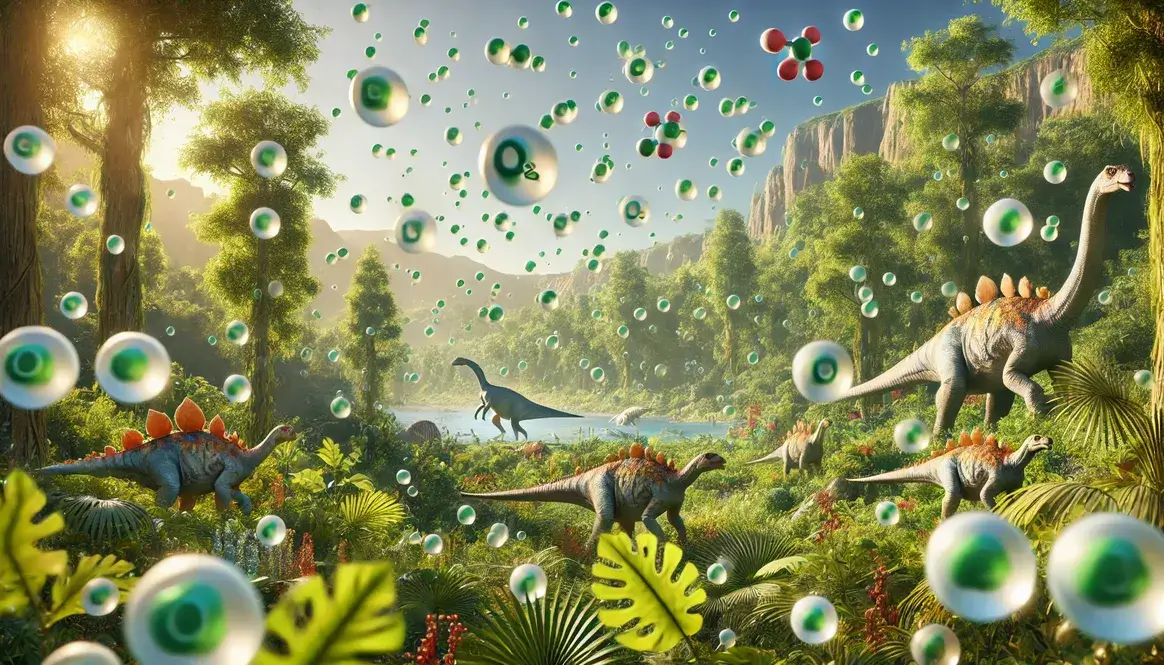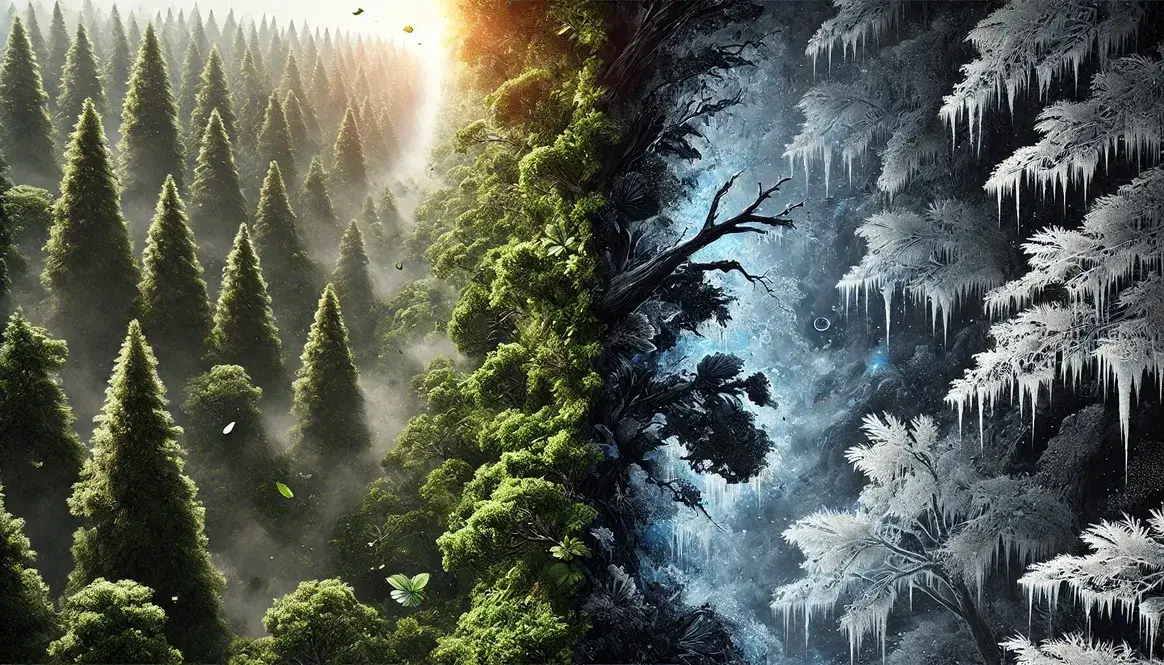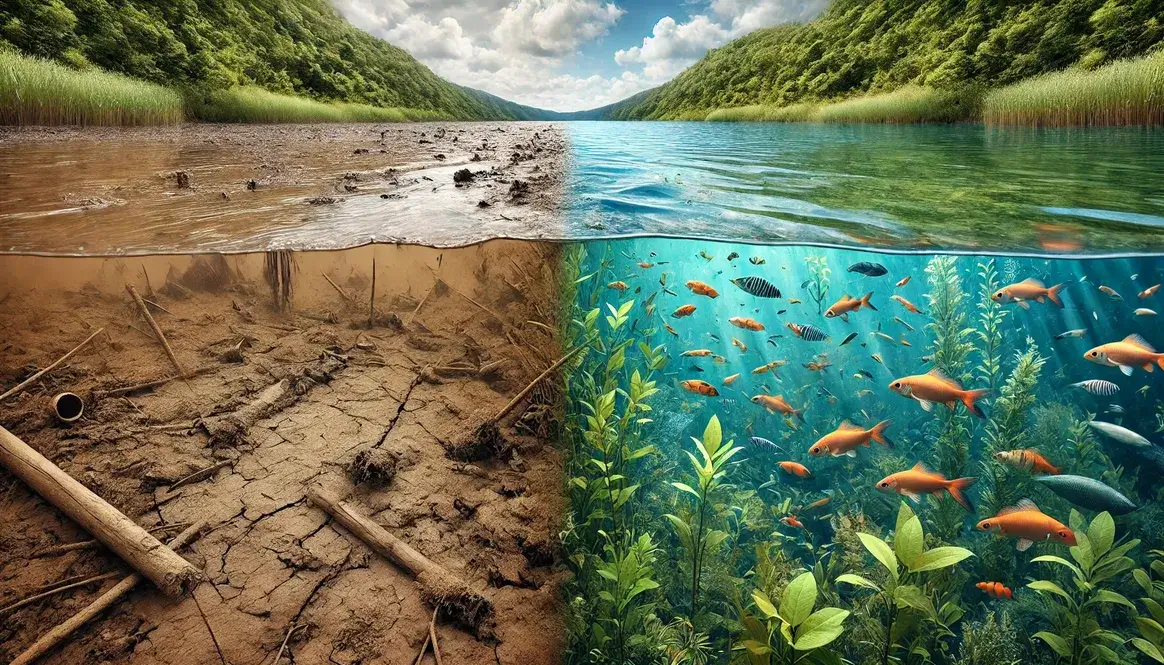The Cretaceous period was a time of dinosaurs, strange plants, and very different weather than we have today. It lasted from about 145 million to 66 million years ago. During this time, the world was much warmer than it is now, and there were no ice caps at the poles.
Understanding carbon dioxide levels in Cretaceous times is really important. Why? Because CO2 is a greenhouse gas that helps trap heat in the Earth’s atmosphere. By studying how much CO2 was in the air millions of years ago, scientists can better understand how our planet’s climate has changed over time.
| Time Period | CO2 Levels (ppm) | Key Events |
|---|---|---|
| Early Cretaceous (145-100 mya) | 1000-2000 | Rise of flowering plants |
| Mid-Cretaceous (100-66 mya) | 1000-1700 | Peak global temperatures |
| Late Cretaceous (66 mya) | 700-900 | Dinosaur extinction |
Carbon Dioxide Levels in Cretaceous: A Timeline
Let’s take a journey through time to see how carbon dioxide levels in Cretaceous changed:
Early Cretaceous (145-100 million years ago)
At the start of the Cretaceous, CO2 levels were very high. Scientists think there was about 1000 to 2000 parts per million (ppm) of CO2 in the air. That’s 2.5 to 5 times more than we have today!
During this time, the first flowering plants began to appear. These new plants started to change how CO2 moved between the air, land, and oceans.
Mid-Cretaceous (100-66 million years ago)
In the middle of the Cretaceous, CO2 levels stayed high, ranging from about 1000 to 1700 ppm. This was when the Earth was at its warmest. The extra CO2 in the air acted like a blanket, trapping heat and making the whole planet much hotter.
This warm climate allowed dinosaurs to live in polar regions, even though these areas had long periods of darkness each year.
Late Cretaceous (66 million years ago)
Towards the end of the Cretaceous, CO2 levels started to drop. By the time the dinosaurs went extinct, there was about 700 to 900 ppm of CO2 in the air. While this is lower than earlier in the Cretaceous, it’s still much higher than today’s levels.
This decrease in CO2 might have caused some changes in the climate, but the Earth was still much warmer than it is now. The end of the Cretaceous brought big changes to the Earth’s climate and life, including the extinction of the dinosaurs.
Understanding these changes in carbon dioxide levels in Cretaceous times helps scientists piece together the story of Earth’s past climate. It also gives us clues about how changes in CO2 levels might affect our planet in the future.
Sources of CO2 in the Cretaceous
Where did all the carbon dioxide in the Cretaceous atmosphere come from? Let’s explore the main sources that contributed to the high CO2 levels during this period.
Volcanic Activity
Volcanoes were major players in pumping CO2 into the Cretaceous air. During this time, the Earth was very active geologically, with lots of volcanic eruptions happening all over the planet.
One of the biggest volcanic events in Earth’s history occurred during the Cretaceous:
- The Deccan Traps: This massive series of eruptions in what is now India lasted for about a million years. It released enormous amounts of CO2 and other gases into the atmosphere.
These volcanic eruptions didn’t just happen on land. Underwater volcanoes along mid-ocean ridges also released CO2 directly into the oceans, which then made its way into the air.
Organic Matter Decomposition
The Cretaceous was a time of lush plant growth. All these plants played a big role in the carbon cycle:
- When plants died, they decomposed.
- As they broke down, they released CO2 back into the atmosphere.
- This process happened on a massive scale due to the abundance of plant life.
The warm, humid climate of the Cretaceous sped up this decomposition process, releasing CO2 faster than in cooler climates.
Ocean Processes
The oceans and atmosphere constantly exchange gases, including CO2. During the Cretaceous, this exchange was different from today:
- Warmer oceans: The Cretaceous oceans were warmer, which made them less able to hold dissolved CO2.
- Releasing CO2: As a result, the oceans released more CO2 into the atmosphere than they absorbed.
- Ocean circulation: Changes in ocean currents also affected how CO2 moved between the water and air.
This table summarizes the main CO2 sources in the Cretaceous:
| Source | Description | Impact on CO2 Levels |
|---|---|---|
| Volcanoes | Large-scale eruptions, including underwater | Major increase |
| Plant Decomposition | Breakdown of abundant plant matter | Steady contribution |
| Oceans | Warmer waters releasing dissolved CO2 | Significant increase |
Understanding these sources helps scientists piece together the complex puzzle of the Cretaceous climate. It also gives us clues about how different factors can influence Earth’s carbon cycle and climate over long periods of time.
Impact of CO2 on Cretaceous Climate
The high levels of carbon dioxide in the Cretaceous atmosphere had a significant impact on the Earth’s climate. Let’s explore how this greenhouse gas affected temperature, rainfall, and sea levels during this fascinating period of Earth’s history.
Global Warming
The relationship between CO2 and temperature is straightforward: more CO2 in the atmosphere leads to higher temperatures. During the Cretaceous, this relationship was on full display:
- Greenhouse Effect: CO2 trapped heat in the atmosphere, causing global temperatures to rise.
- Positive Feedback: Warmer temperatures led to more water vapor in the air, which further enhanced the greenhouse effect.
- Polar Warmth: Even the polar regions were much warmer, with no permanent ice caps.
As a result, the Cretaceous period was hot, with average global temperatures estimated to be 5-10°C warmer than today. This warmth allowed dinosaurs to thrive in areas that would be too cold for large reptiles today.
Changes in Rainfall Patterns
The increased CO2 levels didn’t just affect temperature; they also changed how and where it rained during the Cretaceous:
- More Evaporation: Warmer temperatures led to more water evaporating from oceans and lakes.
- Intensified Water Cycle: This resulted in a more active water cycle, with more frequent and intense rainfall in many areas.
- Shifting Rain Belts: The distribution of rainfall changed, creating new wet and dry zones across the planet.
These changes in rainfall patterns had a profound effect on plant life. Some areas became lush and green, while others turned into deserts. This, in turn, influenced the types of dinosaurs and other animals that could live in different regions.
Sea Level Rise
The connection between CO2, temperature, and ocean levels during the Cretaceous was dramatic:
- Thermal Expansion: As the oceans warmed due to increased CO2, the water expanded, causing sea levels to rise.
- Melting Ice: With no polar ice caps, all of Earth’s water was in liquid form, further contributing to high sea levels.
- Flooded Continents: Much of the land that exists today was underwater during the Cretaceous.
In fact, sea levels in the Cretaceous were up to 200 meters higher than they are today. This created vast shallow seas covering large parts of the continents, providing new habitats for marine life and changing the way land animals could move around.
| Climate Factor | Impact of High CO2 | Result in Cretaceous |
|---|---|---|
| Temperature | Increased global warmth | 5-10°C warmer than today |
| Rainfall | Changed distribution and intensity | New wet and dry zones |
| Sea Level | Significant rise | Up to 200m higher than present |
Understanding these climate effects helps us appreciate the drastically different world that dinosaurs lived in. It also provides valuable insights into how changes in atmospheric CO2 can impact Earth’s climate system on a global scale.
How Scientists Measure Ancient CO2 Levels
Figuring out how much CO2 was in the air millions of years ago is like being a detective. Scientists use several clever methods to uncover clues about ancient atmospheres. Let’s explore how they measure carbon dioxide levels in Cretaceous times.
Plant Fossil Analysis
One of the most interesting ways to estimate past CO2 levels is by looking at plant fossils. Here’s how it works:
- Scientists examine tiny pores on fossil leaves called stomata.
- These stomata let plants breathe in CO2 and release oxygen.
- When there’s more CO2 in the air, plants need fewer stomata.
- By counting stomata on fossil leaves, researchers can estimate past CO2 levels.
This method is particularly useful for the Cretaceous period because there are many well-preserved plant fossils from this time. The fewer stomata they find, the higher the CO2 levels were likely to be.
Ocean Sediment Studies
The oceans hold many secrets about Earth’s past, including clues about ancient CO2 levels. Scientists study tiny marine organisms called foraminifera to uncover these secrets:
- Foraminifera build shells using chemicals from seawater.
- The composition of these shells changes based on ocean chemistry.
- Ocean chemistry is influenced by atmospheric CO2 levels.
By analyzing the chemical makeup of fossilized foraminifera shells found in ocean sediments, researchers can estimate CO2 levels from millions of years ago. This method helps create a timeline of how carbon dioxide concentrations changed throughout the Cretaceous period.
Ice Core Data
While ice cores are incredibly useful for studying more recent climate history, they have limitations when it comes to the Cretaceous:
- No ancient ice: The Cretaceous was too warm for polar ice caps to form.
- Oldest ice cores: The oldest ice cores we have are about 800,000 years old.
- Missing data: This means we don’t have direct ice core data for the Cretaceous period.
However, ice core studies from more recent times help scientists understand how CO2 levels relate to temperature changes. This knowledge can be applied to interpret other types of evidence from the Cretaceous era.
| Method | Time Range | Pros | Cons |
|---|---|---|---|
| Plant Fossils | Millions of years | Direct evidence from the time | Requires well-preserved fossils |
| Ocean Sediments | Millions of years | Continuous record over time | Indirect measure of atmospheric CO2 |
| Ice Cores | Up to ~800,000 years | Very precise measurements | Not available for Cretaceous |
By combining these different methods, scientists can piece together a picture of carbon dioxide levels in Cretaceous atmospheres. This helps us understand how Earth’s climate has changed over millions of years and gives us insights into how our planet might respond to changing CO2 levels in the future.
Comparing Cretaceous and Modern CO2 Levels
The difference between carbon dioxide levels in Cretaceous times and today is striking:
- Cretaceous CO2 levels: 1000-2000 parts per million (ppm)
- Current CO2 levels (2023): About 420 ppm
This comparison reveals that Cretaceous atmospheres had 2.5 to 5 times more CO2 than we have today. It’s important to note that these high levels developed over millions of years, allowing life to adapt gradually.
Understanding this difference helps us grasp the potential impacts of rapidly rising CO2 levels in our modern world:
- Rate of change: Today’s CO2 levels are increasing much faster than in the Cretaceous.
- Ecosystem stress: Rapid changes can stress ecosystems that haven’t had time to adapt.
- Climate sensitivity: Studying the Cretaceous gives us clues about how sensitive Earth’s climate is to CO2 changes.
By examining carbon dioxide levels in Cretaceous environments, scientists can better predict how our planet might respond to continued increases in atmospheric CO2.
The End of the Cretaceous: CO2’s Role in Extinction
The role of CO2 in the mass extinction event that marked the end of the Cretaceous is complex and intertwined with other factors:
CO2 Levels During the Extinction
- CO2 concentrations were already declining from their Cretaceous peak.
- Estimates suggest levels were around 700-900 ppm when the extinction occurred.
- This decline may have been causing gradual cooling before the extinction event.
Interaction with Other Factors
The extinction of dinosaurs and many other species wasn’t caused by CO2 alone. Several factors worked together:
- Asteroid impact: Released enormous amounts of dust and gases into the atmosphere.
- Volcanic activity: The Deccan Traps eruptions added more CO2 and other gases.
- Climate instability: Rapid shifts between warming and cooling stressed ecosystems.
CO2 played a role in this complex scenario:
- It contributed to the greenhouse effect, influencing pre-impact climate conditions.
- Post-impact, atmospheric changes (including CO2 levels) affected global temperatures and ocean chemistry.
- These changes, combined with other factors, created challenging conditions for many species to survive.
Understanding how CO2 interacted with other extinction factors helps scientists piece together the full story of this pivotal moment in Earth’s history.
Conclusion
Exploring carbon dioxide levels in Cretaceous times gives us a window into Earth’s past climate. From volcanic eruptions to lush forests, many factors contributed to the high CO2 concentrations that shaped the world of dinosaurs. By studying these ancient atmospheres, scientists gain valuable insights into how our planet’s climate system works.
As we face rising CO2 levels today, lessons from the Cretaceous remind us of the powerful influence this gas can have on global climate. While the world of dinosaurs was very different from ours, understanding their climate challenges helps us prepare for the changes we might face in the future. The story of Cretaceous CO2 is not just about the past – it’s a key to understanding our planet’s future.









